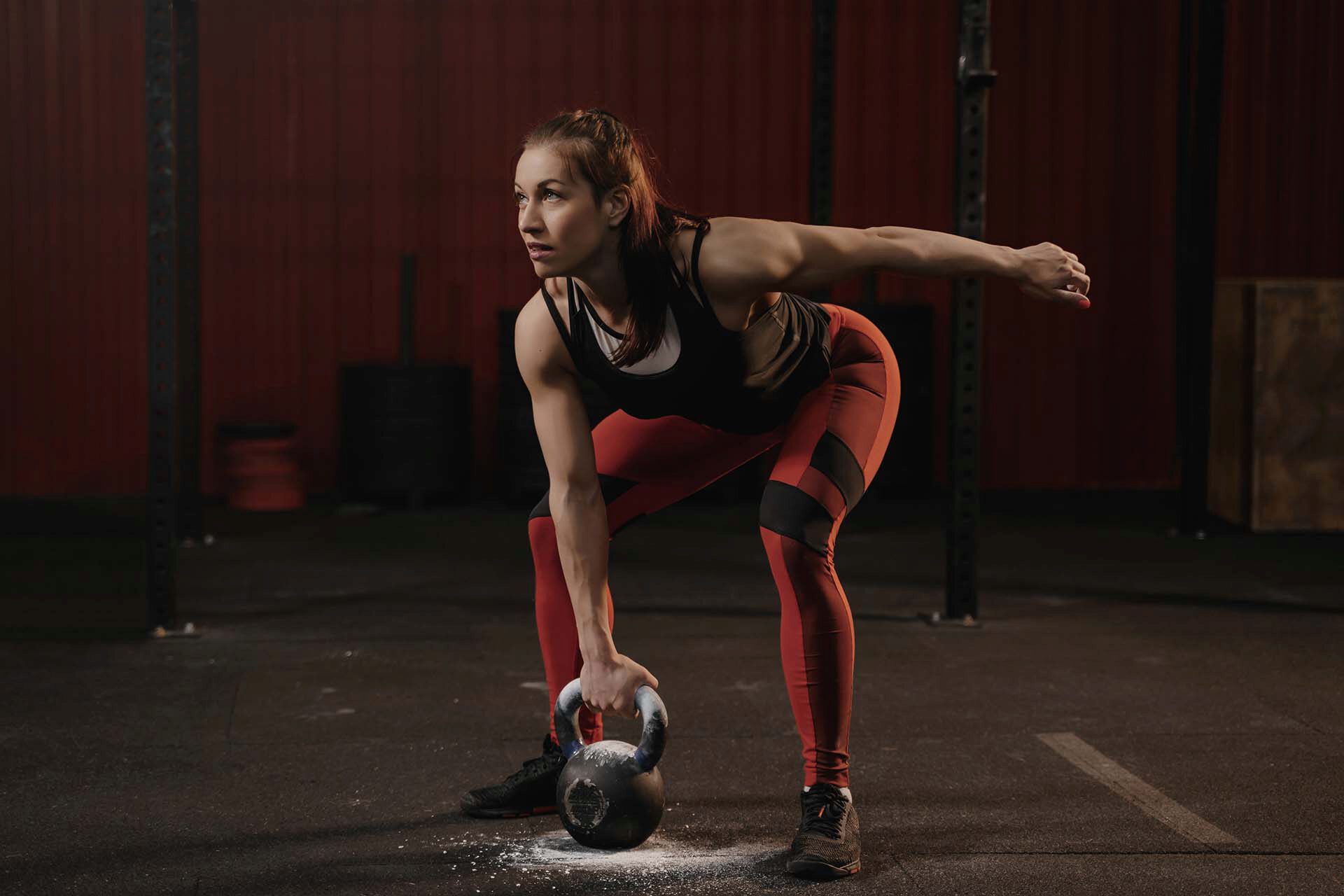Kettlebell Training Benefits: One Of The Best Full Body Workouts
One of the most popular exercise routines right now is the use of Kettlebells.
A Kettlebell can offer full-body strength and conditioning benefits while allowing you to switch up your exercise routines for variations.
Kettlebell is more versatile than traditional gym equipment as it allows you to challenge muscle groups from different angles.
The Kettlebell is a type of free weight that is designed to have an offset center of gravity which varies depending on the type of exercise you are performing.
Most gym equipment such as dumbbells or medicine balls have their center of mass (COM) right in your hands. In the case of Kettlebells, the COM is several inches away from your grip which makes it more functional.
Your everyday task such as lifting groceries or filling a water container requires movement with varying COM. Using Kettlebell routines allows you to translate your strength and power gains to real life skills and demands.
Adding Kettlebells to your routine allows you to change exercise intensity and movement patterns which can help prevent exercise plateau or overtraining
- Total body conditioning
- Improves coordination and balance
- Improves core strength and stability
- Develops explosive power
- Builds stronger posterior chain
- Powerful non-running cardio alternative
- Burns tons of calories
Kettlebell workout involves ballistic movements done from a hinge position that targets the posterior chain of your body– the hamstrings, glutes and back.
The posterior chain muscles are vital for prevention of injuries and improvement of your posture
Here's a full body Kettlebell workout:
Target muscles:
- Legs
- Glutes
- Shoulders
- Core
- Triceps
- Back
This exercise activates both the upper and lower body. It trains your ability to brace your core muscles for greater stability during lifts.
- Step 1: Stand with your feet with Kettlebells lined up between your feet
- Step 2: Squat down and grab the handles. Allow a slight inward rotation of your shoulder so that your thumbs are pointing between your legs.
- Step 3: Leverage your hip strength and engage your core as you move to rack position
- Step 4: From rack position, move to a deep squat by bending at the knee
- Step 5: Perform a smooth movement from squat position to an overhead press. Power back up using your hips and thigh. As you straighten your knees press the Kettlebell overhead.
- Step 6: Bring the Kettlebells back to rack position as you move to a squat.
- Do it for 4 sets x 10 reps
Kettlebell thrusters trains your ability to brace your core muscles for greater stability during lifts
Target muscles:
- Quads
- Hamstrings
- Calf
- Glutes
- Core
KB reverse cross lunge pass through allows you to build your glutes and sculpt your thigh muscles.
The added pass through motion helps challenge your balance and coordination.
- Step 1: Start with the Kettlebell in one hand. Keep your back straight and engage your core.
- Step 2: Step back using the same leg so that you assume a cross lunging position.
- Step 3: Pass the Kettlebell on the other hand by passing through the bottom of the knee and in between the foot.
- Step 4: Keep your chest out. Move back to standing position and assume a cross lunging position again with the other leg.
- Repeat for 4 sets x 14 reps
Kettlebell reverse cross lunge is a low impact exercise that maximizes the activation of your lower body muscles.
Here’s a Kettlebell plan you can follow:
Target Muscles:
- Shoulder stabilizers
- Rotator cuff
- Glutes
- Obliques
Kettlebell windmill is a great shoulder stability exercise with a lot of demanding movement patterns at the hips and spine.
- Step 1: Take the Kettlebell in a rack up position then move it to overhead press position using your right hand.
- Step 2: Stack the kettle in line with your elbows and torso and turn your feet 45 degrees in the opposite direction.
- Step 3: Push your pelvis away from your base and allow minimal bending of the knees.
- Step 4: Keep a straight up arm in an open palm position in your left hand, and look at the Kettlebell as you bend on your hips
- Step 5: As you approach the depth where you cannot bend on the hips anymore, squeeze your glutes to come back tall at the top.
- Do it for 4 sets x 8 reps .
“Kettlebell windmills also emphasizes on strength and stability of the oblique muscles for functional rotational movements”
Target muscles:
- Lower back
- Hamstrings
- Quads
- Glutes
- Core
- Forearms
This exercise can be used to train your body for the deadlift movement patterns before overloading it at the barbell.
It helps you to increase your total body strength and mass.
- Step 1: Place two Kettlebells between your feet. Make sure the handles are lined up in the midline of your feet.
- Step 2: Hinge at the hip as you grab the handles. Bend the knees just enough to reach the handles.
- Step 3: Keep your spine straight, engage your abdominals, pull back your shoulders.
- Step 4: Generate the power from the hips and push your feet into the floor as you press your hips forward to assume an upright position. Squeeze your glutes.
- Step 5: Hinge the hips back as you lower back to the starting position.
- Repeat for 4 sets x 10 reps
Kettlebell deadlifts allow you to train your total body strength and mass.
Target muscles:
- Shoulder stabilizers
- Rotator cuff
- Serratus anterior
- Core
- Obliques
Single Kettlebell plank drag through exercise promotes dynamic stability of your shoulder and provides a great challenge for your core muscles.
- Step 1: Assume a hand plank position. Place a Kettlebell on your left side.
- Step 2: Engage your core and keep your shoulders stable.
- Step 3: Grab the handle using your right hand and then move it to your right side by dragging through the bottom of your body.
- Step 4: Move back to the hand plank position as you get ready for another rep using your left hand.
- Repeat for 4 sets x 12 reps
Single Kettlebell Plank drag through exercise works your deep core muscles which provide stability for your lumbar spine.
Target muscles:
- Rotator cuff
- Posterior delts
- Lats
- Rhomboids
Double Kettlebell row increases the strength of your back and shoulder retractor muscles. Remember to squeeze your shoulder blades as you pull the weight.
- Step 1: Place the Kettlebells just in front of your feet
- Step 2: As you grab the handles. Hinge your hips and maintain a neutral spine. Allow slight bending of the knees so that your body is parallel to the ground.
- Step 3: Lift the handles of the ground by rowing the Kettlebells. Keep your core, glutes and shoulders engaged throughout the movement.
- Do it for 4 sets x 10 reps
Double Kettlebell row exercise is perfect for building stability and strength on the shoulder region
The Kettlebell is a highly versatile gym equipment that should be included in your routine. The vast amount of benefits you could that are too good to ignore.
Doing a Kettlebell circuit is comparable to high-intensity interval training with less impact on your joints.

